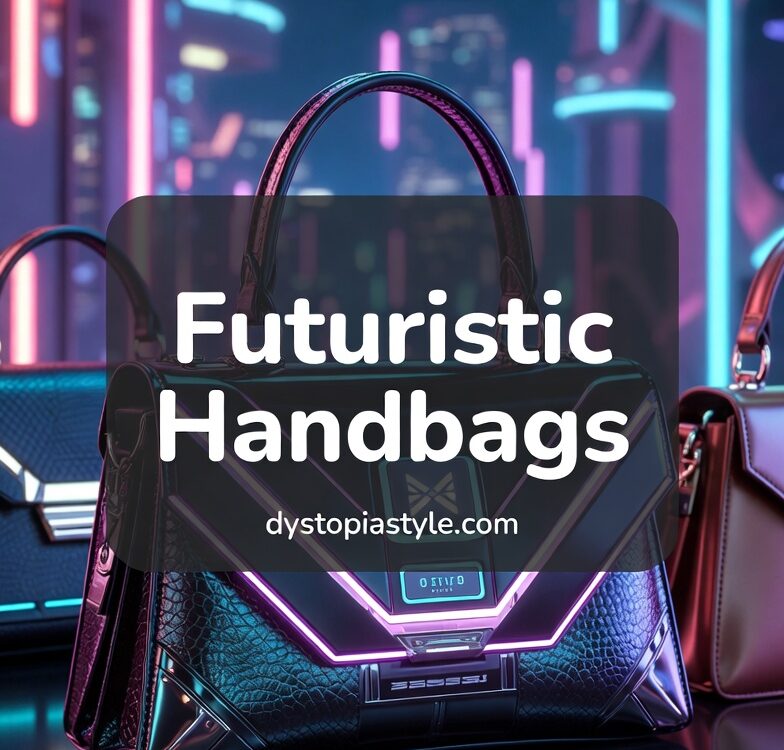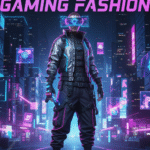
Futuristic Gaming Fashion: Blending Virtual Worlds with Real-World Style in 2025
October 7, 2025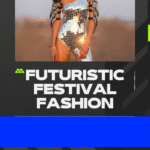
Futuristic Festival Fashion: Embracing Sci-Fi Styles for 2025 and Beyond
October 7, 2025Futuristic Movie Fashion: Iconic Sci-Fi Styles and Their Lasting Impact on Real-World Trends
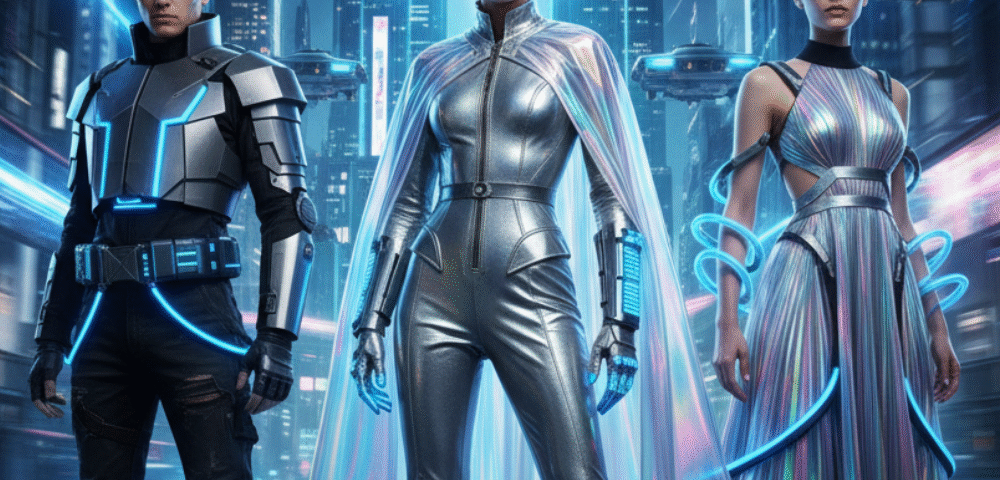
Futuristic movie fashion has long been a captivating blend of imagination, technology, and style, transporting viewers to worlds where clothing isn’t just functional but a reflection of societal evolution, dystopian realities, or utopian dreams. From sleek leather ensembles to metallic bodysuits, these on-screen wardrobes have not only defined iconic characters but also influenced runway collections and everyday wardrobes. As sci-fi films continue to push boundaries, futuristic movie fashion remains a key element in how we envision tomorrow’s aesthetics. In this article, we’ll delve into its history, highlight standout examples from classic films, explore its ripple effects on real fashion, and look at emerging trends.
The Evolution of Futuristic Movie Fashion in Cinema
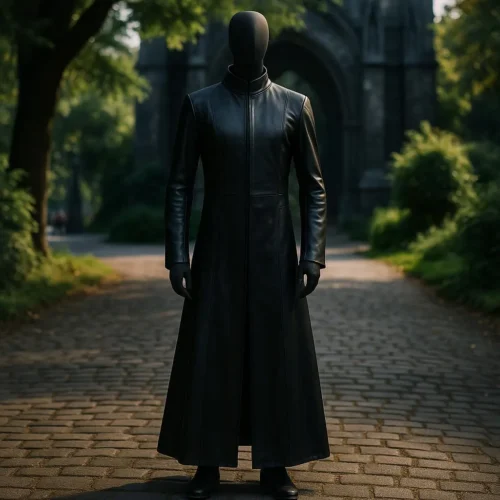
Credit: pinterest
The roots of futuristic movie fashion trace back to early 20th-century films like Metropolis (1927), where director Fritz Lang presented a vision of a stratified society through stark, mechanical costumes that symbolized class divides. These early depictions set the stage for what would become a staple in sci-fi storytelling: clothing that conveys advanced technology, environmental adaptations, or cultural shifts. By the 1960s, amid the Space Race, films embraced “space age” aesthetics, characterized by geometric shapes, metallic fabrics, and minimalist designs. Designers like Pierre Cardin pioneered this in real life with his Cosmocorps collection, featuring patent leather go-go boots and A-line minidresses that echoed the optimism of space exploration.
As cinema evolved, so did the fashion. The 1970s and 1980s introduced dystopian elements, with films like Logan’s Run (1976) opting for comfortable, flowing fabrics in vibrant colors to depict a hedonistic future society. This era’s futuristic movie fashion often balanced practicality with expression, allowing characters to showcase individuality amid controlled environments. Moving into the 1990s and beyond, cyberpunk influences took hold, emphasizing leather, neon, and tech-integrated attire. Today, with advancements in CGI and sustainable materials, modern sci-fi films like Blade Runner 2049 (2017) use laminated cotton and faux fur for weather-resistant, stylish outfits that feel both futuristic and feasible.
This evolution isn’t just visual—it’s thematic. Futuristic movie fashion often critiques contemporary issues, such as consumerism in The Fifth Element (1997) or surveillance in The Matrix (1999). By incorporating elements like asymmetry, metallic sheens, and modular designs, these costumes make abstract concepts tangible, drawing viewers deeper into the narrative.
Iconic Films and Their Groundbreaking Futuristic Outfits
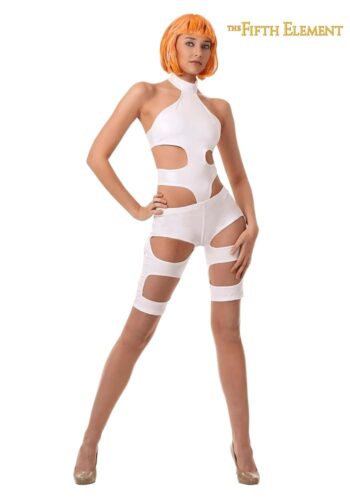
Credit: pinterest
When discussing futuristic movie fashion, certain films stand out for their innovative wardrobes that have become cultural touchstones. Let’s rank and explore some of the most memorable, drawing from expert analyses of their style impact.
Starting from the less favorable, Zardoz (1973) ranks low due to its impractical, crotch-highlighting speedos and rag-like attire, which feel more absurd than aspirational in a post-apocalyptic setting. Similarly, Forbidden Planet (1956) disappoints with monotonous gray uniforms that lack flair, though they hint at early utilitarian futurism.
Mid-tier examples include Judge Dredd (1995), where flashy gold-accented uniforms and tech-augmented body modifications add intimidation and variety. The Matrix elevates this with its sleek black leather trench coats and pants, embodying cyberpunk chic and allowing personal tweaks for characters like Trinity.
Higher up, The Fifth Element, designed by Jean Paul Gaultier, shines with diverse expressions—from Leeloo’s strappy bandage dress to vibrant, flamboyant villain outfits—promoting freedom in a 2263 world.
Blade Runner 2049 impresses with practical, noir-inspired gear like Ryan Gosling’s weather-proof coats, blending style and functionality. Rachael’s structured shoulder pads and leather from the original Blade Runner (1982) captured 1940s retro-futurism mixed with cyberpunk.
Topping the list is Barbarella (1968), with Jane Fonda’s thigh-high boots, lush metallics, and campy space wear designed by Paco Rabanne, offering timeless glamour in the year 4000.
Other notables include Star Wars prequels, with Queen Amidala’s elaborate, Asian-inspired gowns, and The Hunger Games trilogy, featuring Effie Trinket’s pastel extravagance. These films demonstrate how futuristic movie fashion can range from minimalist to maximalist, influencing genres beyond sci-fi.
How Futuristic Movie Fashion Influences Real-World Trends
The symbiotic relationship between futuristic movie fashion and real-world style is profound. Sci-fi films often predict or inspire trends that designers bring to life. For instance, Blade Runner‘s leather trenches and shoulder pads influenced Vivienne Westwood’s 1983 Punkature line and Yohji Yamamoto’s Fall 2017 collection. Similarly, The Matrix‘s all-black ensembles sparked Y2K trends, seen in Dior’s Fall 1999 couture and Balenciaga’s 2017 menswear.
The Fifth Element‘s bandage dresses and crop tops echoed in Alexander McQueen’s Spring 1998 line, while Barbarella‘s metallic bikinis and go-go boots popularized space-age fashion via André Courrèges and Paco Rabanne. Retro-futurism, as seen in Star Trek‘s color-blocked uniforms, has resurfaced in modern collections like Alexander Wang’s Spring 2015 show.
In contemporary fashion, brands like Kanye West’s Yeezy draw from Star Wars: The Force Awakens‘ earth tones and utility wear. The resurgence of 1960s space age aesthetics, driven by designers like Pierre Cardin, reflects a yearning for optimism amid uncertainty, with trends like flippy bobs and metallic dresses linking back to films like The Jetsons and Barbarella. This influence extends to sustainable materials, where sci-fi’s tech fabrics inspire eco-friendly innovations in streetwear and haute couture.
Emerging Trends in Futuristic Movie Fashion
Looking ahead, futuristic movie fashion is evolving with AI and sustainability in mind. Upcoming films like the Barbarella remake starring Sydney Sweeney promise updated space-age looks. Trends include smart fabrics that change color or provide environmental protection, mirroring concepts from Alien series’ biomechanical designs, which inspired Thierry Mugler and Alexander McQueen.
Gender fluidity is also key, with films promoting minimalist or maximalist approaches. As virtual realities blend with fashion, expect more hybrid styles—think AR-enhanced clothing inspired by cyberpunk classics. This ongoing dialogue ensures futuristic movie fashion remains a dynamic force in cultural expression.
FAQs About Futuristic Movie Fashion
What is futuristic movie fashion?
Futuristic movie fashion refers to the clothing and styles depicted in sci-fi films that imagine future societies, often incorporating advanced materials, bold designs, and thematic elements like technology or dystopia.
Which film has the most influential futuristic outfits?
Barbarella (1968) is often ranked highest for its glamorous, space-age costumes by Paco Rabanne, influencing decades of fashion trends.
How has futuristic movie fashion impacted real designers?
Films like The Matrix and Blade Runner have inspired collections from Dior, Balenciaga, and Vivienne Westwood, bringing leather trenches and metallic elements to runways.
Are there current trends inspired by sci-fi films?
Yes, retro-futurism from the 1960s, seen in metallic dresses and geometric shapes, is resurging, influenced by films like Star Trek and Barbarella.
Can futuristic movie fashion be practical for everyday wear?
Absolutely—elements like utility wear from Star Wars or sleek blacks from The Matrix have translated into modern streetwear, emphasizing comfort and versatility.
Final Words
Futuristic movie fashion isn’t just about spectacle; it’s a mirror to our aspirations and fears, shaping how we dress and dream. From the metallic allure of Barbarella to the gritty realism of Blade Runner, these styles continue to inspire innovation in fashion. As technology advances, expect even more seamless integrations between screen and wardrobe. Whether you’re a film buff or fashion enthusiast, embracing elements of futuristic movie fashion can add a touch of tomorrow to your today.


